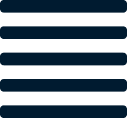Have you ever ran out of a product too soon and experienced the FOMO on sales? In your search of solutions, perhaps you’ve come across demand planning, the practice of accurately predicting and ordering goods so that you have the right amount to sell at any given time. Along with being the solution to not being out of stock, accurate demand planning can help business grow beyond their wildest expectations.
Beyond the organization and structure imposed by this function, businesses can expect:
- Accuracy in future revenue expectations
- Improvement in the customer shopping experience
- Reduction in overstock and understock
- Ability to make data informed decisions
- Alignment across business functions
- Ability to react to market conditions
- Benchmarks for performance
Accuracy in future revenue expectations
Having an expectation of future revenue is a benefit in and of itself. But having an accurate expectation is what will help you grow. Demand planning is a key contributor to a credible plan that can be trusted.
The reason demand planning can accurately predict the future is based on the practice itself, which takes into account prior results, accounts for external and internal changes, and spits out what can be expected based on these variables.
A simple example of this would be if a business spends $100 on an advertising campaign which results in the sale of 5 widgets. Holding all things constant, one would eventually learn spending $200 sells 10 and so on.
Of course, things are not always this simple. The job of the planner is to take all things known and unknown into consideration. A bottom’s up forecasting approach will yield what can be expected based on a business's current assortment. A top down forecasting approach will help inform merchandising and buying teams of the need for new products. Combining the two will result in what sales can be expected at different points in time.
This revenue guidance is crucial in helping a business plan for all functional areas. The margin expected to be returned from inventory will help fund other budgetary expenses such as overhead, systems, advertising and much more. Having an accurate demand plan not only supports this guidance, but it also helps increase profits from optimizing inventory levels and operations. The combination in accuracy of total revenue and costs is what helps businesses become profitable.
Improvement in the customer shopping experience
What happens when a product you want to buy is not available? Do you settle for something else? Do you wait? Or do you go elsewhere? These are the risks faced when retailers inaccurately order inventory due to a lack of forecasting.
Having adequate supply to meet demand not only limits the money left of the table, it ensures customers enjoy sitting at the table in the first place. This can even result in more revenue as happy customers are more likely to purchase from you again and recommend your business to others, thus reducing dollars you would otherwise have to spend on retention and acquisition.
Reduction in overstock and understock
As we mentioned above, the costs of understock include forgone sales and poor customer experience. But having too much inventory is also detrimental. Accurately forecasting inventory can help maximize profitability across channels while minimizing holding costs. By calculating future demand and accounting for lead time and safety stock, brands can order the right amount of inventory each time.
Reducing overstock, or inventory that is in excess of what is needed, reduces exposure to spoilage or dead stock which would otherwise need to be disposed of. The costs of excess inventory and storage add up and reduce the available cash for businesses to spend on other worthwhile initiatives. This wasteful and costly endeavor hurts both the environment and the bottom line.
Ability to make data informed decisions
What happens if you need to cut marketing spend? Or what if your managers want to hire more people? Without guidelines or predictions of expected profits, businesses don’t have all the insights needed to make these decisions. Demand planning is a crucial element in making informed business decisions.
In the example given earlier, if the business only has $150 to spend, you can forecast demand differently. Or alternatively, if product costs get cut to make room for overhead, you can accurately predict what this might do to inventory levels and thus, sales.
Alignment across business functions
What happens when a marketer or salesperson doesn’t know what products need to be sold? They can work with what they got, but having a plan in place will optimize their efficiency and output - further improving overall business profitability.
Demand planning is a function that works in close alignment with many other business stakeholders. Planning helps inform business strategy, which acts as guidance to everyone from supply chain and operations, product, marketing, and finance.
Knowing how much will be ordered and when can help inform supply chain owners on how many suppliers need to be sourced and for which product types. When a current assortment is not enough to satisfy external sales goals, new products will need to be introduced. Thus informing those in design and merchandising of how much demand needs to be satisfied with newness.
All of these relationships require ongoing communication. Depending on the long term desire, brands may decide to pull levers in marketing and finance which can impact planning as well. The key benefit of planning is having a basis for alignment that can inform the expected outcome of various strategies.
Ability to react to market conditions
Markets can change at any given time, and having an agile demand plan can help you keep up with the change - putting you ahead of the competition. An accurate demand plan will be needed in order to even understand if sales are a result of external or internal factors. From there, a business will need to assess if demand is a signal of short term or long term behavior.
When the time comes to pivot, dynamic reporting that highlights variances to plan will be imperative. An agile and open internal business system can allow these insights to flow appropriately, further finessing future expectations.
Benchmarks for performance
Success is not something that can be measured without a definition for what it entails. The same is true when it comes to business. Having a solid forecast serves as a bar for assessing variation in performance. Trending below plan can help spot issues early on and improve your ability to course correct. Trending over plan can be an indication of external or internal factors that need to be understood.
Why is planning so important?
As the old saying goes, “failing to plan is planning to fail”. The ability to generate a precise demand forecast has a major impact on virtually every area of a business. From sales, to operations to finance and everything in between, demand planning can benefit everyone. Thus, improving everyone and everything’s return on investment. Demand planning, for all it’s insight and guidance, is a stepping stone for profitability.
.png)

.png)









.png)



%20hover.png)
.png)
hover.png)







Let us know what you think about this post
Put your comment below.